

Asbestos was once a widely used material: cheap, strong, fire and water...
MORE INFO </> Embed
</> Embed
Asbestos was once a widely used material: cheap, strong, fire and water resistant, and sound-absorbent, it was valuable in many applications – from building to automotive manufacturing to a range of fire resistant products.
Asbestos is a naturally-occurring mineral, which exists in various forms, including white, blue and brown asbestos. But what all forms of asbestos have in common is the thin fibres which the substance is made up of. It is these fibres that pose a threat to humans – when the fibres are inhaled, they can cause serious damage to the lungs.
This program covers:
This program has been produced to be shown to all personnel who may potentially come across asbestos in the workplace.
RUNNING TIME: 11 Minutes
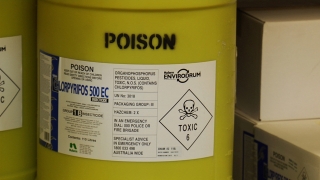

Chemicals are a fact of life. All living things are made from chemicals...
MORE INFO </> Embed
</> Embed
Chemicals are a fact of life.
All living things are made from chemicals and in fact we depend on chemistry for our very existence.....everything from the ground we walk on , to the air we breathe is made from chemicals and chemical compounds.
Every workplace, office, factory, warehouse or plant, uses chemicals to some extent or other. Chemicals range from mild cleaning agents through to highly corrosive, flammable and poisonous substances that are used for different processes and applications.
This program includes:
The safe handling and storage of all chemicals regardless of where they are used requires a commitment by everyone to follow safe work procedures. The realisation of the risks and an ongoing program to minimise the hazards will reduce accidents and make your workplace a safer workplace.
RUNNING TIME: 15 Minutes
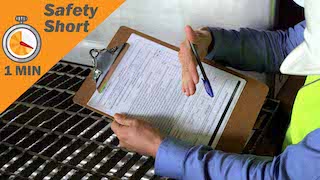

The only safe approach to working in confined spaces is to diligently follow...
MORE INFO </> Embed
</> Embed
The only safe approach to working in confined spaces is to diligently follow the instructions that are detailed in a Confined Space Work Permit and to utilise any personal protective equipment that has been identified as necessary. This safety short gives you a quick overview of Confined Space Entry Permits.
RUNNING TIME: 1 Minute
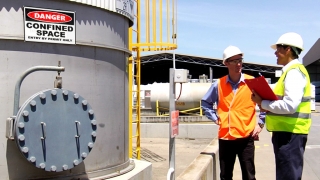

Every year there are serious accidents involving confined spaces in the...
MORE INFO </> Embed
</> Embed
Every year there are serious accidents involving confined spaces in the workplace. A significant number of these are fatal and it is not uncommon for accidents to result in multiple fatalities. In order to reduce the number of confined space accidents we need to have a fundamental understanding of the hazards and risks that are associated with confined spaces.
This program starts by defining a confined space and then talks in some detail about confined space entry permits.
The next section covers the four main reasons why accidents occur in confined spaces.
Featured in the program is the approach that should be taken to deal with the two major hazard groups associated with confined spaces, which are hazardous atmospheres and energy sources.
Hazardous atmospheres include:
Energy sources include:
Confined spaces are dangerous places. Minor risks in normal work situations can become life-threatening risks in confined spaces. You should never become complacent about working in confined spaces. The only safe approach to working in confined spaces is to diligently follow the instructions that are detailed in the Confined Space Work Permit and to utilise any personal protective that has been identified as necessary.
Confined spaces can be safe if approached in the right manner.
RUNNING TIME: 15 Minutes
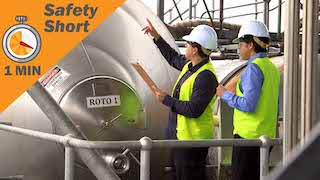

Every year there are serious accidents involving Confined Spaces. This...
MORE INFO </> Embed
</> Embed
Every year there are serious accidents involving Confined Spaces. This safety short explains how you can define what a Confined Space is.
RUNNING TIME: 1 Minute
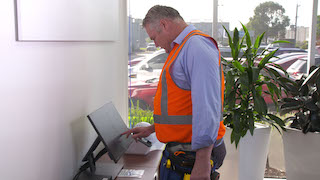

When attempting to provide a safe workplace, it is important to consider...
MORE INFO </> Embed
</> Embed
When attempting to provide a safe workplace, it is important to consider everybody who will set foot in that workplace or on it’s grounds. This includes, not only regular staff members but also contractors and sub-contractors.
When planning a project that involves contractors, health and safety must be part of that planning.
This program covers:
Communication between managers, contractors and all staff is a necessity to keep everyone not only productive, but safe.
RUNNING TIME: 11 Minutes


At the beginning of the job, contractors, along with everyone doing work in...
MORE INFO </> Embed
</> Embed
At the beginning of the job, contractors, along with everyone doing work in the location, should receive a safety induction. This safety short gives you a quick overview of what a safety induction is and what information should be included in it.
RUNNING TIME: 3 Minutes
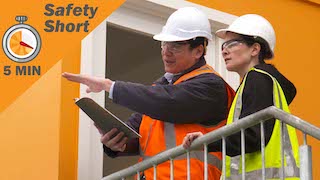

Consideration of health and safety issues must begin at the planning stage,...
MORE INFO </> Embed
</> Embed
Consideration of health and safety issues must begin at the planning stage, before the contractor has started work. This safety short covers some important questions that should be asked when planning work for a contractor and potential hazards a contractor may encounter.
RUNNING TIME: 5 Minutes
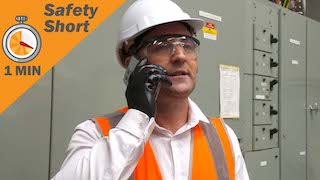

One of the most important considerations in contract management is so-called...
MORE INFO </> Embed
</> Embed
One of the most important considerations in contract management is so-called “task creep”. This can occur when, after the contractor’s task is assigned, the job requires more work than was originally agreed. This safety short briefly explains what ”task creep” is and why it’s an important consideration.
RUNNING TIME: 1 Minute
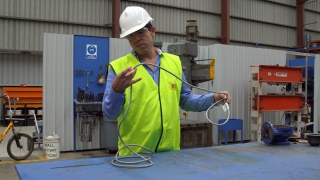

Most workplaces are literally surrounded by a maze of electrical circuits....
MORE INFO </> Embed
</> Embed
Most workplaces are literally surrounded by a maze of electrical circuits. Cables, conduits and extension cords deliver electricity to plant, equipment appliances and lights.
The vast majority of people know very little about electricity and this lack of knowledge makes it very difficult for people to recognise potential hazards. Without a basic understanding of how electricity behaves and what effects electricity can have on the human body, it is very difficult to understand what we as individuals can or should do, to reduce the risks associated with specific electrical hazards.
This program contains the following information:
Basic facts – definitions and explanations of basic electrical terms.
Basic rules – states and explains the three basic rules that apply to electricity.
Rule #1 - Electricity will only travel in a circuit.
Rule #2 - Electricity will always travel in the path of least
resistance.
Rule #3 - Electricity will always try to travel to the ground.
Effects of Current on the Human Body – explains what effects
different current levels will have on the body. Also explains
how the resistance offered by the human body can vary under
different circumstances.
Common Hazards – this section looks at the most common
hazards found in the workplace, including overhead power
lines and the use of extension cords.
Hazard Control – this section identifies human error as the
number one cause of electrical accidents in the workplace.
The section also covers the most common ‘do’s and don’ts’
that apply to electrical safety and finishes with information
on the wearing of appropriate personal protective equipment.
Electricity is a convenient, cost effective and surprisingly safe source of energy in every workplace. We should however not become complacent about the potential hazards associated with electricity. Even though there are relatively few accidents associated with electricity, many of the accidents that do happen have serious or devastating results.
RUNNING TIME: 22 Minutes
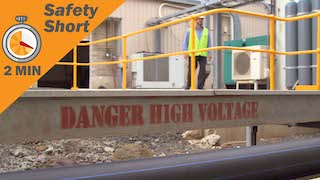

It's important to have a basic understanding of how electricity behaves if...
MORE INFO </> Embed
</> Embed
It's important to have a basic understanding of how electricity behaves if you intend to work with it. This safety short gives you some facts to consider when working with electricity.
RUNNING TIME: 2 Minutes
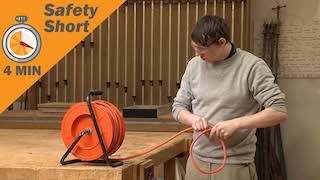

In addition to the potential for injury and death, electrical accidents in...
MORE INFO </> Embed
</> Embed
In addition to the potential for injury and death, electrical accidents in the workplace can result in a wide variety of outcomes including damage to equipment, fires and explosions. This safety short outlines the important rules to consider when working with electricity.
RUNNING TIME: 4 Minutes
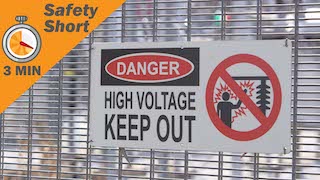

Most electrical accidents occur as a result of existing control measures...
MORE INFO </> Embed
</> Embed
Most electrical accidents occur as a result of existing control measures being either ignored or violated. This safety short gives you a quick overview of some do’s and don’ts when working with electricity.
RUNNING TIME: 3 Minutes
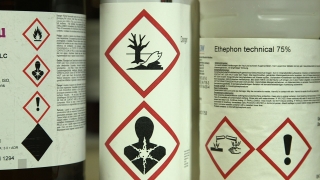

Every year, vast quantities of chemicals are sold and shipped, for use in...
MORE INFO </> Embed
</> Embed
Every year, vast quantities of chemicals are sold and shipped, for use in workplaces around the world.
And, with a global level of trade comes a need to ensure that the hazards pertaining to chemical products are clearly communicated - regardless of where in the world those products are being put to use.
While national laws and regulations relating to chemicals may be similar, they are often different enough to require multiple sets of Labels, Safety Data Sheets, and other information when being traded internationally.
All this creates the potential for confusion - which, when dealing with hazardous chemicals - could have disastrous consequences in the workplace.
Developed at the UN level, the Globally Harmonised System of Classification and Labelling of Chemicals (or GHS for short) aims to develop a single, globally harmonised system to address:
This program provides an overview of these elements as your workplace makes the transition to the GHS.
DURATION: 13 Minutes
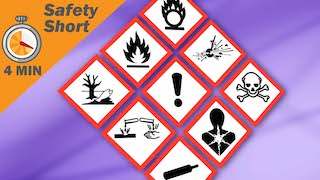

Every combination of class and category classification under the GHS,...
MORE INFO </> Embed
</> Embed
Every combination of class and category classification under the GHS, requires a unique combination of label elements, including: Pictograms, Signal Words, and Hazard Statements. This safety short gives you a quick overview of these elements.
RUNNING TIME: 4 Minutes
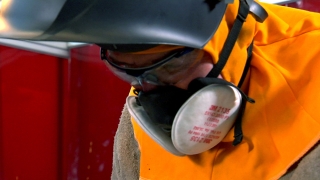

In many workplaces the potential for the inhalation of hazardous...
MORE INFO </> Embed
</> Embed